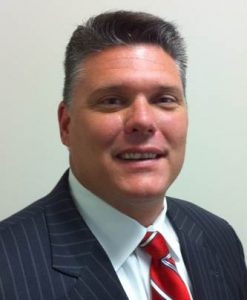by David Guy

February 2012 – As the ARRA act incentivizes physicians to jettison paper files in favor of electronic records, integrating analog patient data to a digital ecosystem is prohibitive and problematic. Traditionally, medical device companies have focused on the device, and healthcare IT has focused on the data. Little work has been done to enable legacy devices to communicate with today’s health networks seamlessly and securely.
One category of device that is used more widely than many realize is an endoscope. An endoscope is introduced into the body through a natural opening and is used every day to perform routine exams in certain medical specialties. Thus, an otolaryngologist may need to evaluate the sinonasal cavity during a patient evaluation. In order to do this, the physician may choose to use an endoscope to directly visualize these structures, greatly aiding his ability to make an accurate diagnosis. A urologist may choose to use a cystoscope (a specialized endoscope to visualize the bladder) to determine the cause of bloody urine. Virtually every pediatrician uses simple endoscopy to look for fluid in the ears or red swelling in the nose. More commonly known is that gastroenterology makes up a significant portion of the thousands of these types of procedures performed every day across the US and globally.
Traditionally, most of that endoscopic clinical data has vanished after viewing.
Endoscopy is the next large data set that needs to be incorporated into longitudinal electronic records, much like radiology a decade ago. There are many parallels between endoscopy and radiology, but none more exciting than the prospect of the remote capture and interpretation of the data. When radiology CPT codes were separated to allow billing for both the read and/or facility fees, it created more efficiency in the teleradiologic sharing of data between specialists, primary care physicians, and patients A similar unbundling of codes and reasonable regulations for endoscopy could expand its clinical application substantially.
An added benefit would be the partial transfer of endoscopy to non-traditional and remote locations. The prospect of mid-level practitioners and primary care physicians capturing endoscopic exams electronically opens up new sites of service and potentially removes redundancy and costs. Illustrating this potential, pharmacies like CVS and Walgreens are finding great success with their urgent care offices and plan for further expansion. Numbering over 4,000 locations nationwide, these new sites of service can become a triage and pivot point to begin medical care. There is potential that these clinics can alleviate some of the non-emergency pressure on overburdened Emergency Departments.
Freeing data from legacy silos requires agnostic, cloud based hardware and software solutions that can be integrated into EMR’s and PHR’s. Until each EMR can freely exchange data with proposed HIE’s, it is important to enable patients to share their stored medical data with physicians that are providing care but not technologically connected. An example in endoscopy is connecting a wireless network to existing medical video towers and displaying and synching the data through an iPad. Until recently this endoscopic data either disappeared when the exam was done, or it was saved to VCR’s or printed images, creating too much complexity to routinely integrate.
Data that disappears after the exam serves no long-term benefit in confirming iterative changes in disease state. By creating a timeline of images and videos, it is easy for all medical personnel that encounter the patient to have a more complete view of the patient’s history.
Similar to consumer adoption of smartphones and tablet PC’s, medicine has the opportunity to leverage technologies to speed automation. Endoscopic technology has a chance to improve patient understanding, physician collaboration, and clinical efficiency.
About the Author
David Guy is President and Chief Executive Officer of Envisionier Medical Technologies, Inc. (EMT). In June 2008, EMT recruited David Guy from Gyrus/Olympus to take the company to the next level of sales and leadership. Mr. Guy has 13 years of ENT medical device experience in sales, marketing, and executive management at Gyrus ACMI- Olympus, Applied Medical Physics and JEDMED.
You can reach David Guy at dguy@envisionier.com or call 888.363-6461.


Leave a Reply